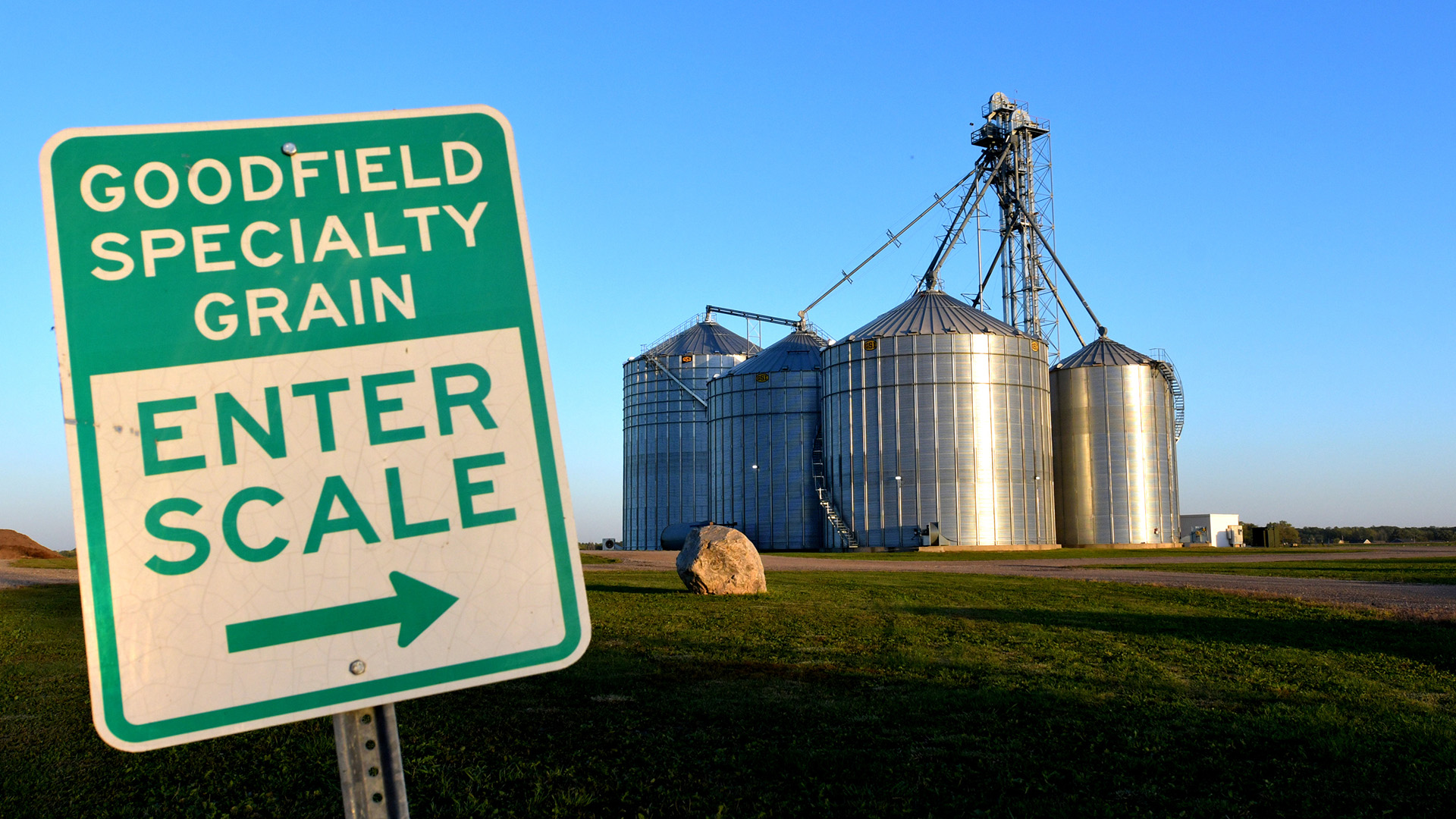As the air turns crisp and the temperatures cool, Peoria area residents begin to frequent the typical customs and attractions that herald the fall season: apple orchards, pumpkin patches, Spoon River Drive, haunted houses.
While traveling to these often rural fall destinations, someone is likely to encounter a grain elevator, the towering storage facilities that loom over the flat Midwestern terrain.
For Clay Liesman and anyone else involved in the operations of these grain elevators that dot the central Illinois landscape, the arrival of autumn brings the busy season of the local agricultural harvest and its attendant traits: metric tons of corn and soybeans, unanticipated challenges and long, labor-filled hours.
“You have breakdowns … all the little things that happen,” said Liesman, the grain division manager for Ag-Land FS, Inc. “And you meet an array of people in your job, from the electricians to the sanitation crews that come in and clean things out. There are a lot of working pieces that go into running a grain elevator.”
At its core, the grain elevator serves as a vertical, multi-story storage unit for corn and beans. Farmers bring their harvested crop to the local grain elevator and are paid out at the market price they’ve locked in as designated by the Chicago Board of Trade. At that point, the grain elevator stores bushel upon bushel of harvested goods before routing it to the marketplace or end user.
The middle man
The elevator, in essence, acts as the formal middle man in the life cycle of the central Illinois harvest.
“Many farmers either do not want to make the investment in on-farm storage or trucking, so a local country grain elevator is convenient and economical for them to bring their grain at harvest,” said Patrick Kirchhofer, manager of the Peoria County Farm Bureau.
But there’s much more transpiring at these grain elevator operations than simple storage, and Liesman’s role is to oversee it all. Ag-Land FS — a locally owned agricultural co-operative serving producers in Peoria, Tazewell, Logan and Fulton counties — boasts seven grain elevator sites: in Green Valley, Canton, Bartonville, Elmwood, Williamsfield, Dunlap and Monica.
Ag-Land recently acquired the Monica Co-Op, which doubled its cumulative storage capacity to 14 million bushels. The vast majority of that storage is devoted to corn and soybeans, although Liesman noted that Ag-Land also deals in some wheat and corn sorghums.
‘They can contract ahead If they think the market is going to go up in the future, and they can store those bushels with us’
— Clay Liesman
The sheer physical labor required to move that capacity into storage is daunting. But grain managers like Liesman also supervise the numerous individual transactions for each of those corn and soybean bushels with farmers in addition to the handling and processing involved once those crops are in his company’s care.
On the financial side, elevators such as Ag-Land offer several different options for farmers selling their harvest. A farmer could simply go with the market price on that particular day — in the first week of October, the height of the harvest season, prices for corn were $4.59 per bushel, $12.26 per bushel for soybeans.
The margins for farmers can be vanishingly thin, according to Kirchhofer, and identifying the right price point is crucial.
“The grain markets operate on a supply-and-demand type of system,” Kirchhofer said. “They’re free markets, which is what we want. And farmers are free thinkers. They know that today’s price is not going to be tomorrow’s price for their corn and soybeans.”
Another scenario allows farmers that sense the price might go up in the future to store their harvest at Ag-Land starting in September and October and not sell until several months later, once that higher price point materializes.
“They can contract ahead If they think the market is going to go up in the future, and they can store those bushels with us,” Liesman said.
Demanding work, grueling hours
Once the farmers deliver their crops from the field to the elevator, Liesman and his staff start the hard work. The crops are weighed and then evaluated for their moisture content, making sure they’re neither too dry nor too wet. From there, the crops are dumped into underground pits near the grain bins and transported up the leg, or elevator, through a series of buckets up to the top of the bin and into the facility’s wet tank. The corn is then dried and prepared for long-term storage.
Liesman and Ag-Land then shift to brokering large-scale sales of the grain they’ve acquired from local farmers. The most common destination for the stored grains ends up being the many ethanol plants in central Illinois, though considerable portions are transported to the Illinois River to trawl through the river markets. Kirchofer added one more typical market for grain: feed for hogs, chickens and cattle.
“Soybeans are a source that’s high in protein, and it’s an excellent animal feed for hogs and poultry especially,” he said.
In the heavy harvest weeks of late September and October, this process repeats itself over and over for 70-plus hours a week, from 7 a.m. to 7 p.m. Monday through Saturday and noon to 5 p.m. on Sunday. It is physically demanding work, picking up ground piles of grain and sweeping tanks.
These conditions contribute to the biggest challenge grain elevators face, one they share with many other businesses: attracting and retaining a consistent workforce, according to Liesman. Hiring also falls under his purview, and he has gotten creative in finding ways to incentivize workers to stay on for the entirety of the harvest season. This year, he introduced bonuses for workers who finish out the whole season.
“We haven’t had anybody quit yet,” Liesman said optimistically at the start of October.
The grueling work weeks also wear on Liesman, who is in the midst of his third harvest as the grain manager for Ag-Land. But it’s an industry that almost feels like a family heirloom. Liesman’s father worked as a grain manager in central Illinois for 50 years, and his earliest jobs in high school were with the grain elevator operation managed by his father.
With an upbringing that centered on farming, Liesman finds value in helping to keep the local agricultural economy steady.
“I wanted to get into that field of work to help the farmer be successful with their operations,” he said.





